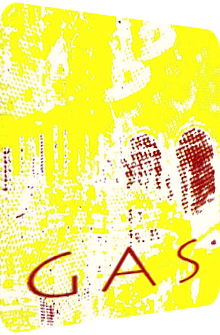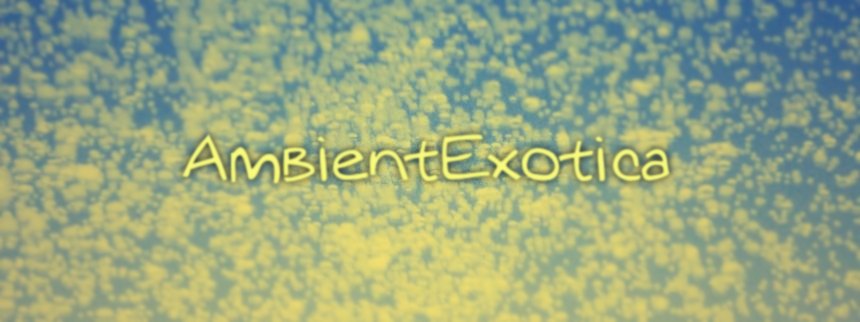
Gas
Gas
1996
Gas is the famous Ambient project of Wolfgang Voigt, the co-creator of the Cologne Kompakt label which is admittedly mentioned quite often here in the Ambient section. In 1996, Voigt released his first self-titled album as Gas on the Mille Plateaux label. Three albums followed in the pre-Kompakt years, each of them featuring a mixture of mellow synth sounds, orchestral textures, thumping beats and menacing settings various long, untitled tracks. In 2008, these 4 records were recompiled under the title Nah Und Fern. However, in this review, I will concentrate on Gas' first album only because it is an Ambient benchmark for me and incidentally contains one of the best Ambient tracks I ever came by. It is also a foreshadowing device of the things to come, because Voigt uses the same care on Gas that is perceptible in his forthcoming works; he furthermore oscillates between moods and sounds all the time. While the artwork is flippantly offhand and doesn‘t show the same care and overarching conceptual intermingling with the music, its yellow stains and red jots are good ways of representing the floating, aeriform attributes of the music. Whatever mood Voigt comes up with, it is always richly textured and consists of several elements, bringing orchestral qualities to primarily electronic music, the coexistence of these devices being quite a novelty back then.
Track 1 starts with a majestic but danger-evoking, dusky string of several layers, some of them being warm and cozy, others dark and rumbling. Since this song is beatless, its textures lay transparently open in front of the listener. The main string consists of just one note, but the flittering and barely noticeable melodies that are packed in-between the string show the actual skills of Voigt. I believe I am also recognizing modulated pluckings of an acoustic guitar, but since they are perfectly alienated, I could be imagining things. Track 2 is a long 14-minute piece with steady beats and offers a glistening mixture of different melodies and pulsating sounds that lay around the main aorta of the track, a frostily angelic string. Voigt tests the concept of Ambient music on this particular track: although every element is already introduced in the first minute of the song, the track moves along for an additional 13 minutes, making this a hypnotic track that causes the listener to listen carefully to the setup in this long timeframe, and sure enough, the strategy works and suddenly the consciousness adapts to the multiple layers and spots ingredients that weren't audible before. Track 3 is a pompous track whose ambience relocates a few years later and can be found in Gas‘ third album Königsforst of 1999. Warm strings of bass violins, harmonious vinyl crackles and deeply pulsating synth strings add a festiveness to the entirely welcoming song. The clear cut guitar strings and the presence of harp-like melody bits add crystalline brightness and orchestral qualities to this beatless track.
Track 4 is an 11+ Deep House track with pumping beats, aquatic muffled background synth loops and staccato percussion bits. The short but ubiquitously repeated loop grows larger and is more upfront shortly after its introduction. Track 5 uses the same basic formula of a steady beat coupled with a gorgeously hazy loop and a repeated bright one-note sound whose reverb is sustained for a few seconds, thus making this element a distinctly towering light house that stands atop of the whirling, deep synth layers. Track 5 is the better one in comparison to Track 4, because the synth whirls are more mesmerizing and delicately soothing. The bright one-note pulse is another wonderful addition that makes this a track welcoming and clear. While all these tracks were marvelous in their own way, Track 6 is a glowing and deeply awe-inspiring drone track of almost 14 minutes and without a doubt one of the best Ambient tracks ever composed. Incredibly thick, deep and bright synth strings play in unison, while cherubic bits of brightness pulsate on top while deep synths function as rumbling bass lines. The brightness is oscillating and is sometimes intensified, sometimes muffled and blurred, but always perceptible. Although my description ends here in lack of colorful terms and vivid expressions, I urge you to check out Track 6 if you don't know or love it already. This is one hell of a headphone track, but it also works in speaker settings as long as they are potent enough to transfer the multiple textures and the vast deepness of the track's synths.
This album and all the following ones by Gas are only minimal in one aspect: once every element is introduced in the first minute or so, the tracks don't change anymore and simply fade out without adding anything new, not even the slightest modulation. But since this is a texture-rich album with lots of layers, moods and settings, the purposeful repetition is no weak point, but the major message of Gas. It forces the listener to think about the diffusing deepness and invites him to stare into the abyss of whirling synths while being accompanied by huge bass hooks or vinyl crackles. The successful intermixture of classical music with electronic Ambient loops is the most important outcome of this project, for this kind of music was considered as timeless in the 90's, but electronic music most definitely was not. Voigt showed that these distinct entities can work well together and constructed the first album of 4 with the same attitude and approach. It is also one of his brightest albums, for the succeeding albums Zauberberg and Königsforst are among the most mystical and horrifying Ambient albums of the 90's. As I‘ve mentioned above, Track 6 alone is worth the existence of the first album, and its supernova-like brightness and incredibly relaxing soundscape make this the best Gas track of many, and one of the very best Ambient tracks of all time. Highly recommended, even though Voigt‘s other albums are more interesting from an artistic viewpoint and much darker. If you want to avoid darkness, go for his debut album.
Ambient Review 038: Gas – Gas (1996). Originally published on Feb. 22, 2012 at AmbientExotica.com.
